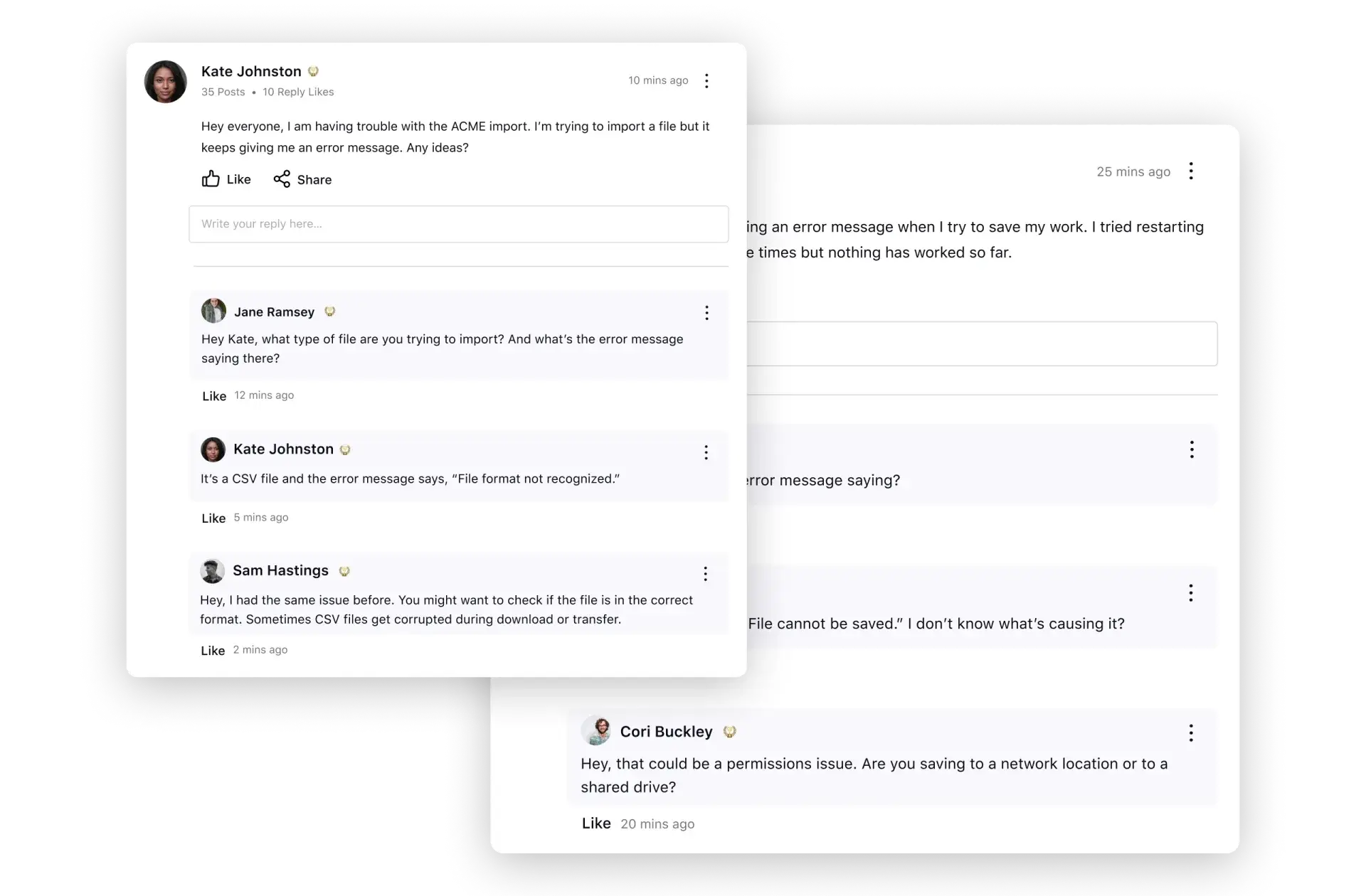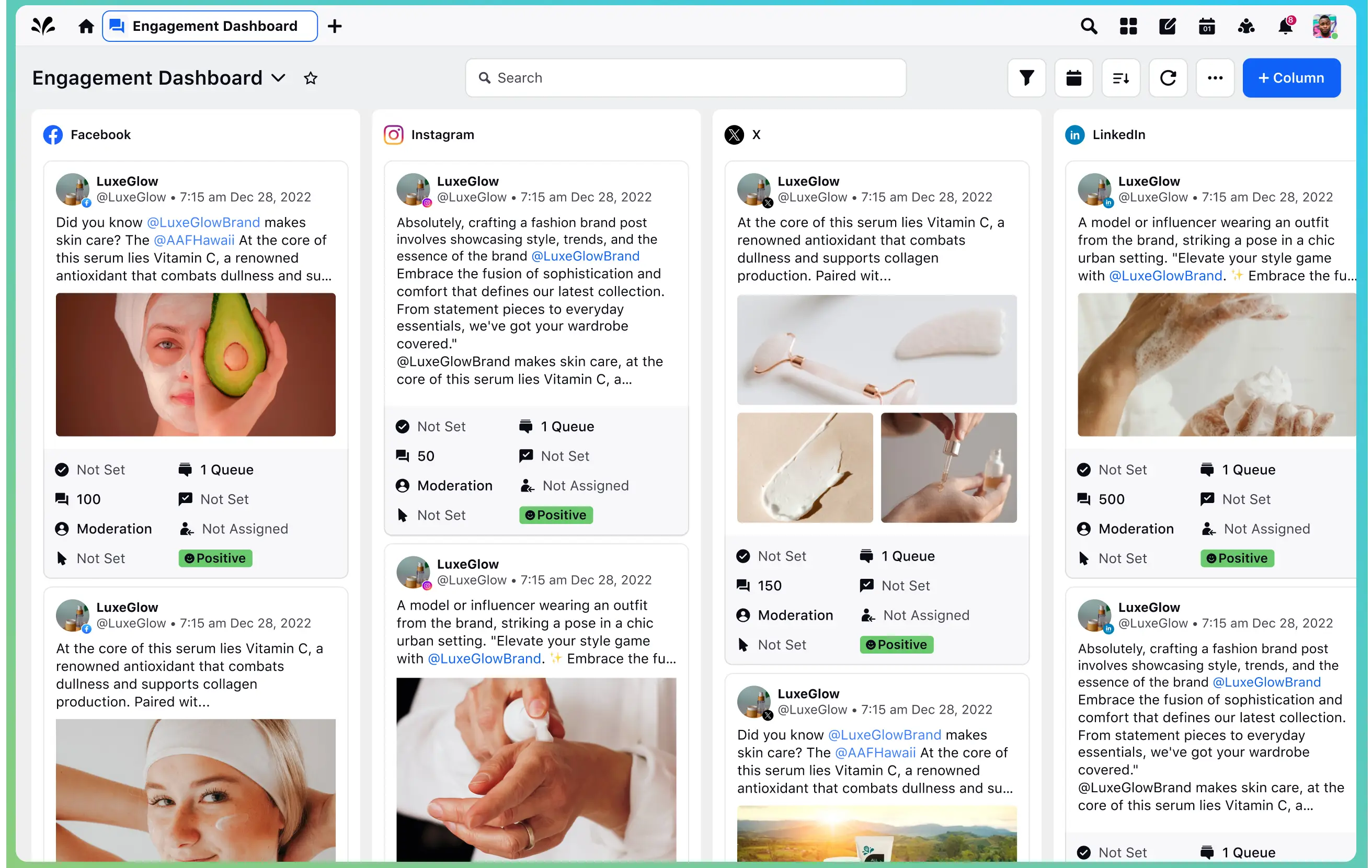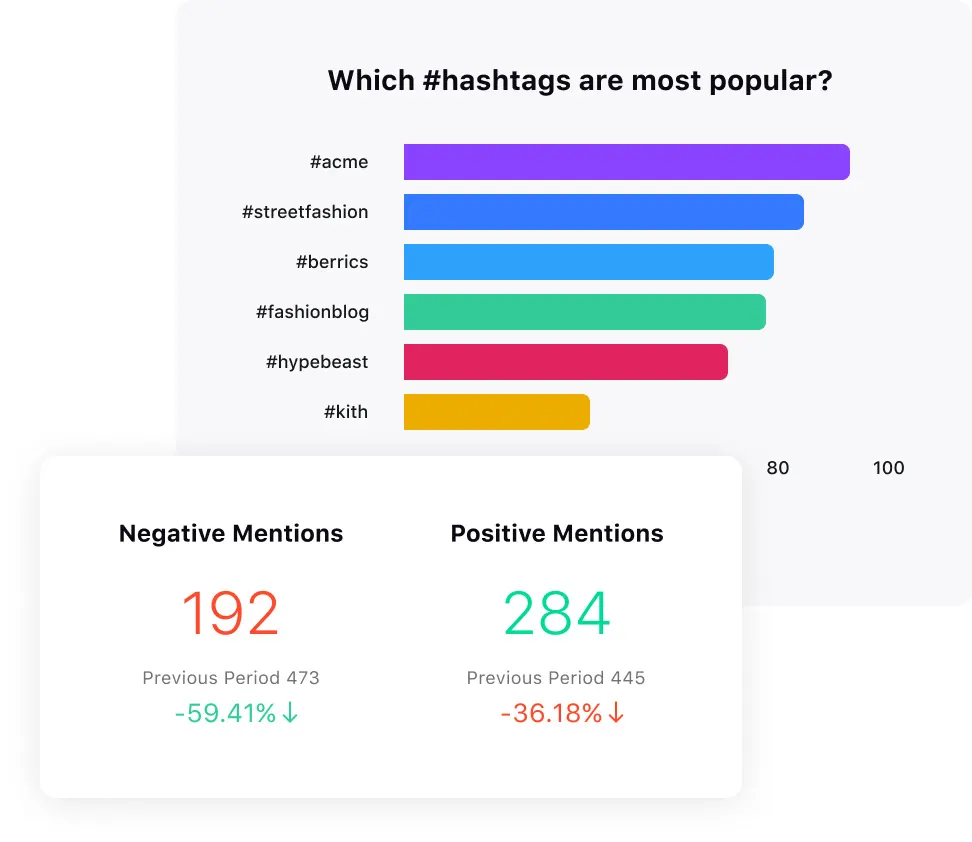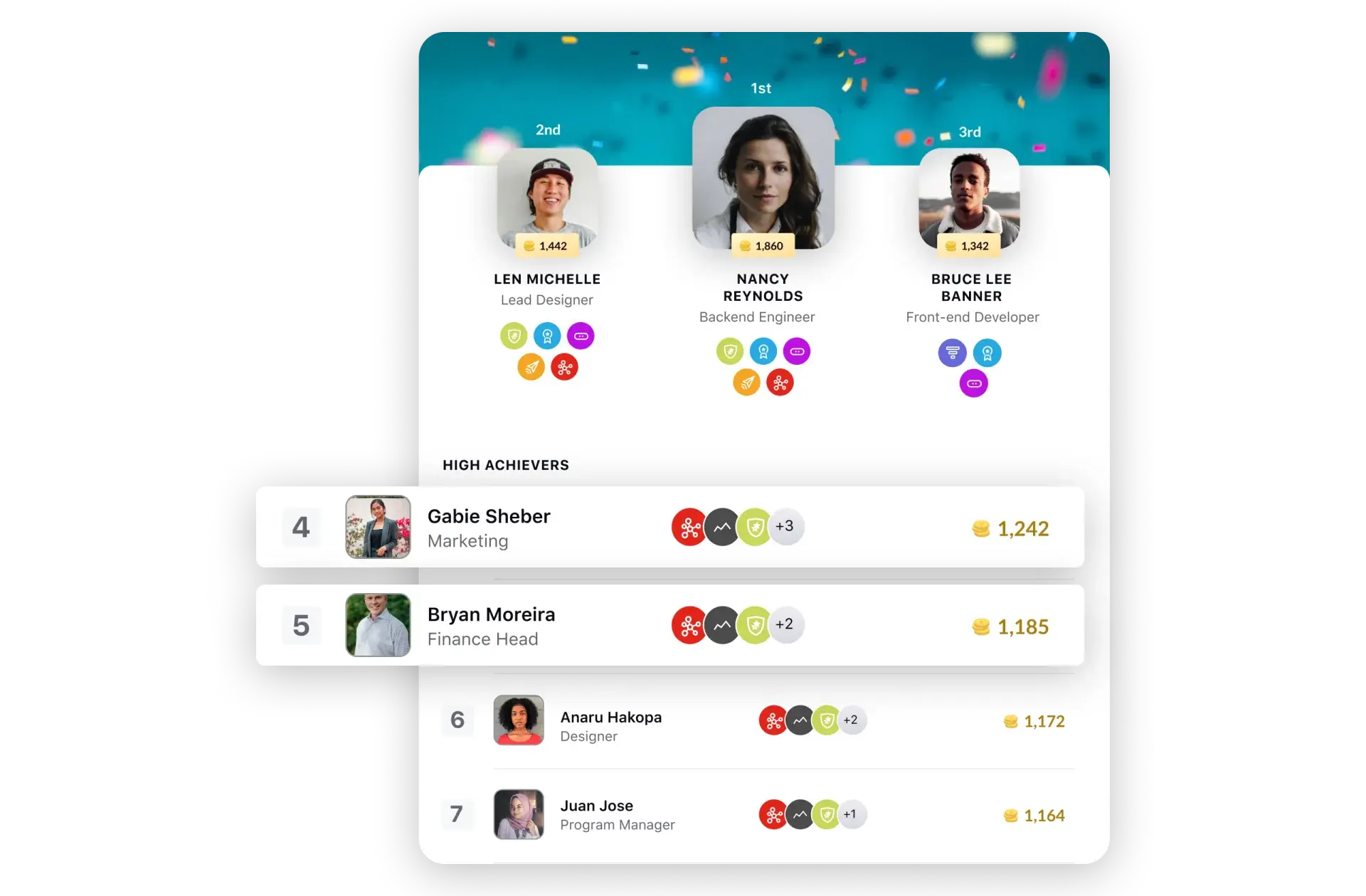What is digital customer engagement?
Digital customer engagement is the interaction between your business and customers through digital channels to build lasting relationships, enhance satisfaction and drive loyalty. This interaction can take various forms, including:
Email communications: Personalized emails through email marketing updating customers about new products, services or offers
Social media interactions: Engaging with customers through posts, comments and direct messages on platforms like Facebook, Instagram or X (formerly Twitter)
Live chat services: Providing real-time assistance on your website through chatbots or live customer service agents
Online communities: Creating forums or groups where customers can interact, ask questions and share experiences
Mobile apps: Offering a dedicated app for easy access to services, support and notifications
Webinars and online events: Hosting virtual events to educate or engage customers about products or services
Interactive content: Using quizzes, polls, customer surveys or interactive videos such as Facebook Live and Instagram Live to engage customers on websites or social media channels
With the proliferation of smartphones, social media platforms and AI-powered tools, businesses are presented with unprecedented opportunities to connect with their audience on a personal level, regardless of industry. From retail and finance to healthcare and hospitality, organizations are leveraging customer service channels to deliver seamless, personalized experiences that resonate with today's tech-savvy consumers.
In most companies, digital customer engagement initiatives are spearheaded by a cross-functional team comprising marketing, customer service and IT professionals. This collaborative approach ensures alignment between customer needs, business objectives and technological capabilities, driving effective implementation and optimization of customer engagement models.
Why is digital customer engagement important?
Digital customer engagement directly influences brand loyalty and your bottom line. Also, your audience's perception of your brand largely hinges on how you engage with them and cultivate relationships. Studies suggest:
Responding to web customer leads within five minutes makes them 9 times more likely to convert. Digital customer engagement tools enable you to respond quickly and effectively, turning potential leads into customers. Those who don't focus on digital engagement often miss this critical window, losing potential conversions.
Customers with a purchase history with your business tend to spend 67% more than new ones. Digital customer engagement strengthens this loyalty, encouraging repeat business.
Digital customer engagement vs Customer engagement
Digital customer engagement and customer engagement are different and must not be conflated with each other. Understanding this concept is fundamental for devising successful digital marketing strategies.
Aspect | Digital customer engagement | Customer engagement |
Definition | Interactions and experiences are facilitated through digital channels such as email, social media, websites, mobile apps, etc. | Interactions and experiences with a brand across various customer touchpoints, including in-person, phone calls, direct mail, etc. |
Reach and accessibility | Extends reach globally, accessible 24/7 across various digital platforms. | Limited by physical boundaries, typically local or regional reach. |
Personalization and customization | Utilizes data analytics and automation to deliver highly targeted and personalized communications based on customer data and behavior. | Relies on personal interactions and customer service representatives to deliver tailored experiences. |
Data-driven insights | Generates vast amounts of data on customer behavior, preferences and trends, providing actionable insights for CX optimization. | Limited data collection and analysis capabilities, primarily anecdotal feedback and market research. |
Scalability and efficiency | Enables rapid scalability and automation of interactions, efficiently managing large customer bases with minimal resources. | Engagements may be time-consuming and resource-intensive, challenging to scale. |
Challenges | Data privacy concerns, integration complexities, maintaining consistency across channels and staying abreast of evolving technologies. | Limited reach and accessibility, difficulty in tracking and measuring effectiveness. |
Now that you know the meaning of digital customer engagement, its components, benefits and distinctions from general customer engagement, let’s look at these strategies to elevate digital customer engagement in your business.
7 digital customer engagement strategies
There could be countless ways to engage with your customers in the digital customer service landscape. However, the strategies below hold the greatest significance.
1. Omnichannel customer engagement
Omnichannel customer engagement recognizes that customers interact with brands through a multitude of channels including websites, mobile apps, social media, email, physical stores and more. Rather than viewing each channel in isolation, you adopt an omnichannel approach to ensure that customers experience a cohesive brand identity and messaging regardless of the channel they choose.
For example, enable customers to start browsing products on your website and seamlessly continue their shopping experience on a mobile app or in-store, with their preferences and shopping cart synchronized across platforms.
Do you know: A contact center CRM system brings together customer data from different contact center channels. When customers reach out to you, your agents can see all the channels that customers might have used to contact you on a single screen, with a complete record of their conversation history. And the best part is that they can handle multiple interactions seamlessly. Discover how unified agent desktop software is enabling this for leading businesses worldwide.
2. Personalized communication
Tailored interactions in digital customer engagement go beyond using customer names; they involve crafting messages that resonate with their interests, previous interactions and preferences.
When you integrate personalization into your communication strategy, you naturally cut through the noise of generic marketing. You should use your customer data, such as past purchase history, browsing behavior and interaction patterns, to create content uniquely relevant to each client.
Top brands like Amazon leverage this for personalized product recommendations, content localization and discount deals or offers on previous purchases. Such a focused approach can help you grab customer attention and foster deep connections with your brand, increasing engagement and loyalty.
📌Two cents from Sprinklr
🔍A/B Testing and optimization:
Continuously test and optimize your personalized communication strategies to identify what resonates most with your audience. Experiment with different messaging, offers and personalization tactics and measure the impact on key metrics such as open, click-through, and conversion rates.
📲Privacy and consent
Ensure compliance with data privacy regulations and obtain explicit customer consent before using their personal data for personalized communication. Transparency and trust are essential for maintaining positive customer relationships and avoiding privacy concerns.
3. Online community engagement
A digital community can be a strategic step towards digital customer engagement, creating a dedicated space where all your customers can connect, share and interact. This space isn't just about promoting products or services; it's a platform for customers to exchange ideas, offer feedback and feel a part of your brand's journey.
The community will enable you to create deeper, more meaningful customer relationships. It can shift them from merely buying to actively participating. A well-nurtured community can increase customer loyalty, enhance brand advocacy and generate valuable insights into customer preferences and needs.
Good to know: Modern community forum software offers a great opportunity to engage your customers and turn them into loyal brand advocates. Features such as leaderboards, points and badges can encourage customer participation and recognition. Moreover, with the help of AI, you can analyze every conversation in the community and gain valuable insights into your products and services without the need for manual analysis. Learn how to build an effective community management strategy.

4. Interactive content
Social media challenges can be an excellent way to engage with your customers and create buzz around your brand. Organize contests and giveaways on platforms like Facebook, Instagram and X to encourage customers to interact with your brand in fun and memorable ways.
These challenges often involve customers posting content, using specific hashtags or participating in creative user-generated content competition related to your brand. This boosts engagement and increases your brand’s visibility and reach. Well-crafted challenges can turn participants into brand ambassadors, spreading word-of-mouth endorsements within their own networks.
When designing social media challenges, ensure they align with your brand values and resonate with your target audience. Make participation simple but exciting and offer enticing rewards that motivate your audience. Also, consider your campaign's viral potential— fun, unique and shareable challenges tend to gather more traction.

5. AI-powered chatbots
AI-powered chatbots, available 24/7, leverage programmed algorithms to deliver timely and accurate responses to customer inquiries, ensuring seamless communication. These chatbots can handle various tasks, from answering frequently asked questions to guiding customers through complex purchasing processes.
Moreover, AI-powered customer service chatbots continually learn from past interactions, enabling them to offer increasingly personalized and relevant assistance over time. By harnessing the power of machine learning in customer service, you can drive digital customer engagement while simultaneously alleviating the workload on your customer service teams.
😀Fun Fact: Did you know that Sprinklr's generative AI-powered conversational bots can provide omnichannel support in over 100 languages? What's more, you can deploy them effortlessly across 25+ channels, including voice, ensuring seamless communication.
These bots aren't just smart; they're adaptive, too! They can dynamically handle requests, resume conversations after interruptions and even escalate complex queries to suitable agents with complete context transfer. Learn more about the Sprinklr conversational AI platform.
6. Social media engagement
Social media has evolved beyond a mere marketing tool; it has become a dynamic space for conversation, community-building and brand advocacy. You can leverage social media platforms to share content, respond to inquiries, address customer concerns and showcase your brand personality. This two-way communication fosters a sense of authenticity and transparency, enhancing the overall customer experience.
It is important to track key performance metrics such as reach, impressions and customer sentiment to effectively measure social media engagement. These metrics can help you evaluate the effectiveness of your social media engagement efforts. Use this data to refine your strategy, identify areas for improvement, and optimize your content and engagement tactics over time.

7. Gamification
Today, consumers are inundated with information and choices, making it increasingly challenging for you to capture and maintain their attention. Gamification offers a solution by tapping into intrinsic human motivations, such as achievement, competition and social interaction, to make conversations more engaging and rewarding. Here’s how to begin:
Define objectives and desired outcomes: Clearly define your objectives for implementing gamification, whether it's increasing customer engagement, driving sales, fostering brand loyalty, or educating customers about your products or services.
Identify gamification elements: Determine which gamification elements will resonate most with your audience and support your objectives. These elements may include points, badges, leaderboards, challenges, rewards, progress tracking, virtual currencies, levels and social sharing features. Tailor the selection of elements to suit the preferences and behaviors of your target audience.
Integrate gamification across digital touchpoints: Embed gamification mechanics seamlessly into your digital platforms, including websites, mobile apps, social media channels and email campaigns. Design interactive experiences that encourage participation and progression, making it easy and enjoyable for users to engage with your brand.
Offer meaningful rewards and incentives: Design rewards and incentives that are relevant, valuable and motivating for your audience. These may include discounts, coupons, exclusive access to content or events, virtual goods or recognition within a community. Ensure that rewards are attainable yet challenging enough to maintain interest and drive continued engagement.
Encourage social Interaction and collaboration: Foster a sense of community and camaraderie by incorporating social features into gamified experiences. Enable users to compete with or collaborate with friends, share achievements on social media and participate in group challenges or events.
💡Pro Tip: While gamification significantly increases customer engagement, tracking customer engagement metrics, retention rates, conversion rates, and user satisfaction are equally important to evaluate the effectiveness of your gamification efforts. Analyze user feedback and behavior data to identify areas for improvement and iterate on your gamification strategy over time.

Examples of successful digital customer engagement strategies
You can learn many strategies from brands around you if you observe them closely. Let's discuss a few examples of digital customer engagement.
1. Northwestern Mutual
Northwestern Mutual's recent Instagram campaign, known as the "Museum of Recent History," was a remarkable achievement, and it was all thanks to Sprinklr's digital engagement tools. By utilizing Sprinklr Insights' precision, the team identified content themes that resonated with the audience, resulting in a 10x increase in engagement. Sprinklr's Asset Manager ensured seamless collaboration, compliance, and platform optimization. With Sprinklr's Rule Engine automation capabilities, the team managed over 50,000 engagements efficiently in just seven days. The campaign received over 57,000 engagements, with one post becoming the most-liked post in the company's history. The campaign also attracted 300 new followers. Sprinklr played a pivotal role in Northwestern Mutual's digital success, and the success of this campaign has inspired the two companies to continue working together in the future.
2. SAP
In 1972, SAP embarked on a customer-focused journey, evolving from a small startup to a global leader in business technology. Recognizing the significance of social media, SAP embraced digital transformation to enhance customer communication. Initially, social presence proliferated, but managing over 1,200 accounts became unwieldy and needed more strategic cohesion.
Recognizing the need for a unified platform to streamline operations and align social efforts with business objectives, SAP turned to Sprinklr. Through Sprinklr's Unified CXM platform, SAP was able to standardize social listening, reduce accounts to 450 and establish a centralized reporting function. This transformation allowed SAP to focus on fostering brand engagement and amplifying its presence at events. The collaboration with Social Tribe further enhanced SAP's social impact.
The results were tangible: improved interaction rates, increased brand association and a strategic leap toward long-term goals. To learn more about how SAP's social program transformed into a cohesive, data-driven engine with the help of Sprinklr, you can read the full story.
While connecting with customers digitally may seem straightforward, many brands struggle to stand out amidst fierce competition. They simply may not have the right technologies and strategies in place. So, businesses that aim to future-proof themselves seek out tools to assist them.
Enter Sprinklr AI+. The generative AI-powered platform is tailored for brands aiming to engage with customers strategically. Integral to Sprinklr’s Unified CXM platform, Sprinklr AI+ provides real-time consumer and brand intelligence, generating actionable audience insights. Sprinklr’s Unified CXM solution suite offers social listening, customer feedback management and media monitoring, helping brands effectively engage with their digital audience.
We understand that some decisions require a closer look. Request a demo to explore Sprinklr firsthand and see how it fits your needs before committing long-term. Ready to get started?
Frequently Asked Questions
Thank you for contacting us.
A Sprinklr representative will be in touch with you shortly.
Contact us today, and we'll create a customized proposal that addresses your unique business needs.
Request a Demo
Welcome Back,
No need to fill out any forms — you're all set.



